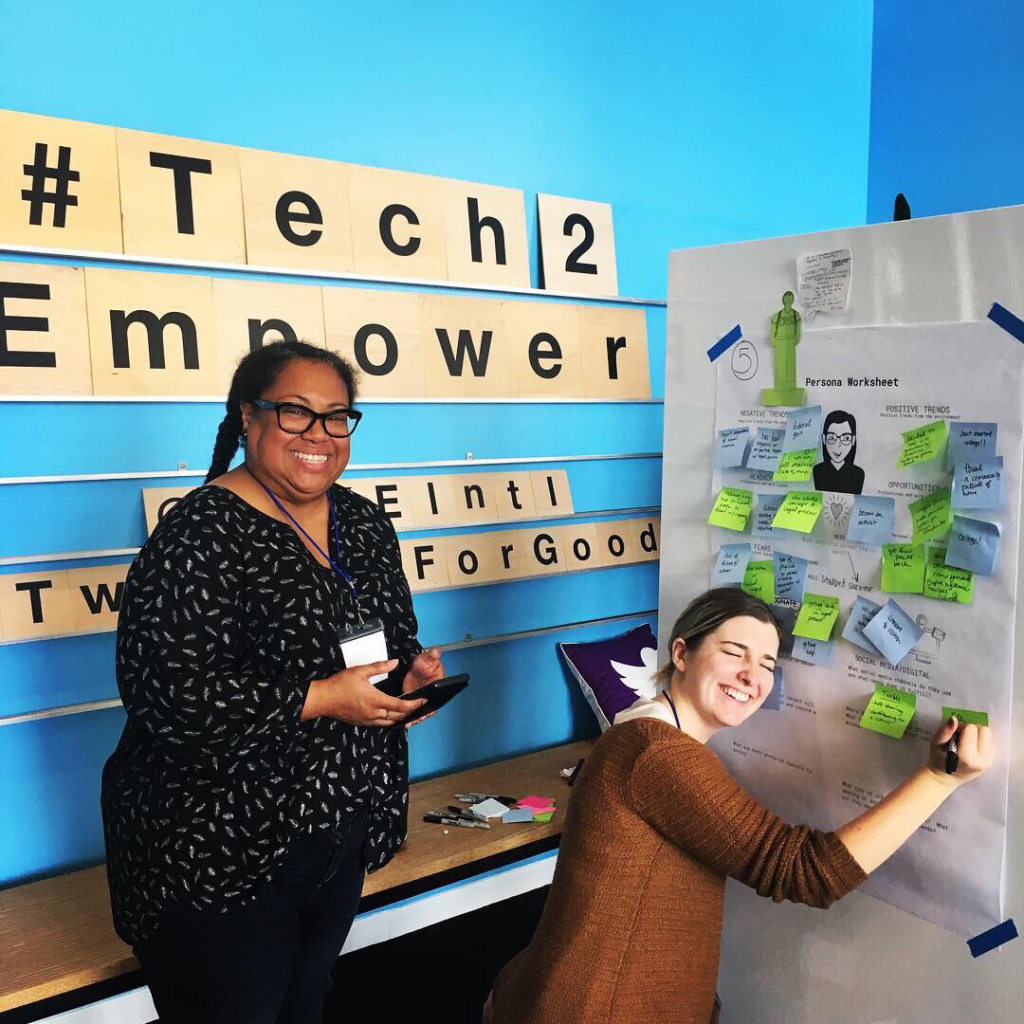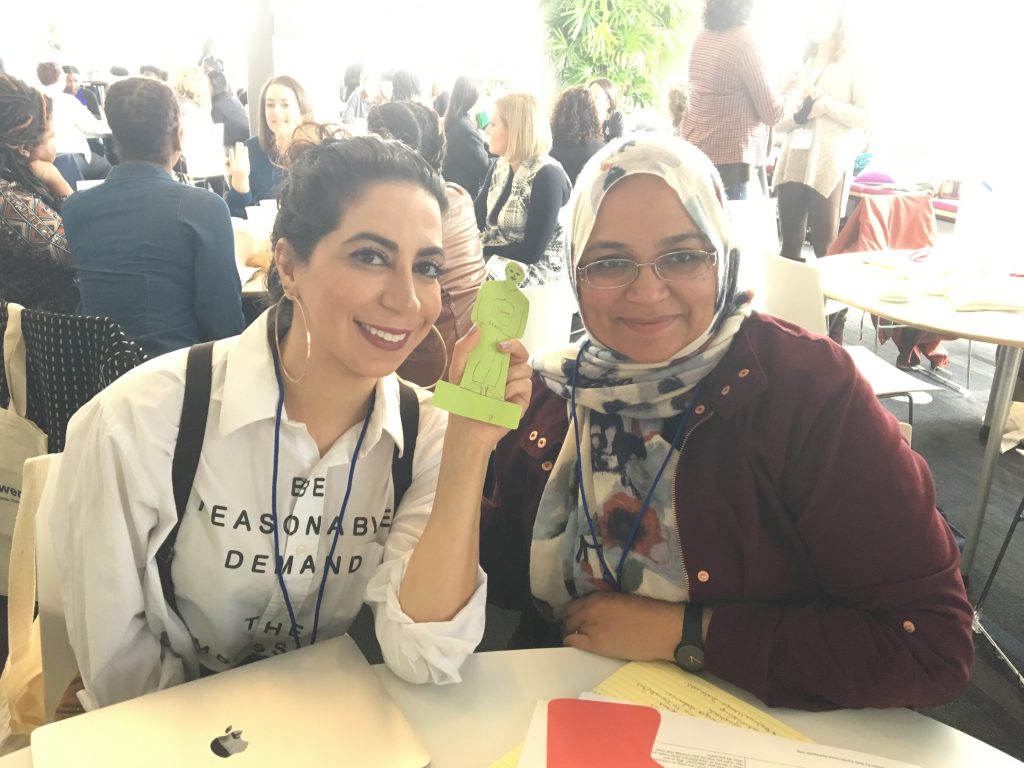
Before I get to the topic of using posters to make your workshops or meeting more interactive (and fun), I want to wish you a Happy International Women’s Day! The photo above is from a mini-workshop I did as part of Wake International’s “Tech2EmpowerUSA.” at Twitter Headquarters this week. The program is specially design to leverage the power of technology in supporting women’s rights and social justice leaders and organizations to advance their work and impact.
The workshop was part of the three-day program where participants were learning both strategy and how to use tools from women who work in the tech industry here in San Francisco. The participants represent a diverse cohort of 41 women’s rights and social justice leaders from 18 organizations from 11 states across the country. These amazing activists work every day on the front lines of communities across the U.S., tackling critical issues that are shaping the present and future of our country and our rights.
I designed a 90-minute workshop focused on “Human-Centered Social Media Strategy” which teaches how to apply a simple design-thinking technique, creating personas, as the basis of your digital strategy. The important thing is to start with having empathy for your target audience – understand their feelings, see what they see, appreciate them as humans, and communicate this understanding.
In 90 minutes, we did two exercises that helped participants identify their target audience and then build out a persona, a fictionalized character that described motivations, barriers and identifies the right content and channels to use.

To make the workshop interactive, I spent a brief amount of time presenting the what, why, how, and examples of target audiences. Then it was time for a simple exercise. Write a target audience definition. However, participants had to do this with people shaped sticky notes and a speech bubble. This was much more fun than writing it down on a worksheet!
The participants were at mixed levels of skills and experience and organizations ranged from community/grassroots organizations to larger institutions. To add to the complexity, some participants came from the same organization and others were the sole representative. The commonality was that everyone was working on Women’s Rights and Social Justice, although from different local contexts and different types of programs.
One might think, oh no, this is impossible. But learning from adjacent practices can also be quite rich. So, I had participants do a share pair with another person or team and discuss their target audiences. We did a brief share out where I asked people to snap if the target audience that was shared had some similarity or common characteristics to their target audience. There was a lot of snapping.

The next exercise was a small group exercise that modeled the first step a small nonprofit might do to build an audience persona. Get together staff for half hour or 60 minutes, and do a “brain dump” of everything they know about their audience.
The next facilitation challenge was to break them into small groups to work on the personas using a poster-sized version of the persona worksheet. If you know me, sticky notes and marker were also involved.
Breaking a large group into small groups for an exercise is also instructional design challenge. There are many ways to do it. I needed to get the 45 participants into ten small groups, each with station that included a poster, markers, and sticky notes.
We had to determine what target audience each small group would use for a persona and then have participants be assigned to a small group. I asked for volunteers who wanted to work on their target audience. If they raised their hand, they described their target audience to the whole group. I gave them a number and they went to a corresponding poster station. Once everyone stepped forward, those still seated self-selected what group they wanted to join.
The small groups worked on fleshing out the information on the persona – adding sticky notes, making changes to the persona illustration. I also gave them a summary of recent research from the Women’s Philanthropy Institute about giving motivations for women’s and girl’s causes. As, incorporating secondary research is part of the process.
While we didn’t have time for everyone to do a report out, several groups volunteered to share a brief report. (They were reward with a copy of my book, The Happy Healthy Nonprofit, or Kathleen Loehr’s Gender Matters: Growing Women’s Philanthropy. I ended with providing them more resources and worksheets for human centered strategy.
I couldn’t have done an interactive workshop without spending a bit time planning it. I create lesson plans for every workshop where I ponder the instructional goals, what I know about the audience, the mechanics of the interactivity, the room layout, AV, and supplies. I had not been in the room before, although I did see photos. And, I only had 15 minutes to set it up. So, this required a bit of pre-planning.
Even if you have a short amount of time to teach (and set up), you can make your trainings (and meetings) interactive. This helps with increasing attention spans and retention as well as make the session more fun.
How do you make your trainings or meeting more fun that can lead to more learning?
Beth Kanter is a consultant, author, influencer. virtual trainer & nonprofit innovator in digital transformation & workplace wellbeing.

Leave a Reply